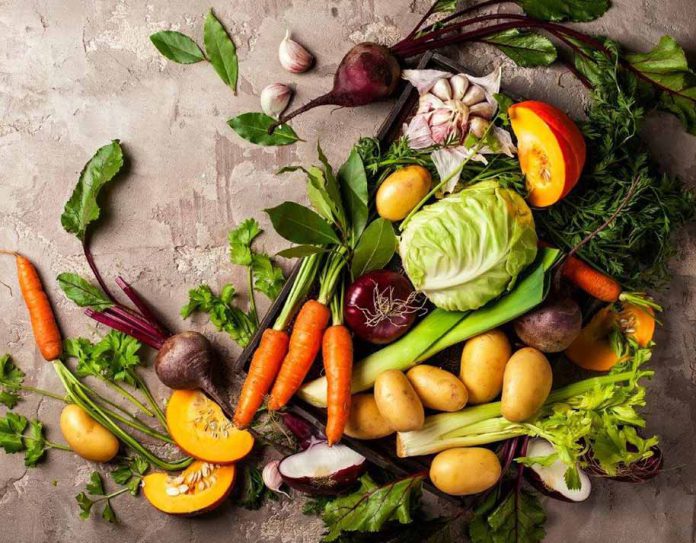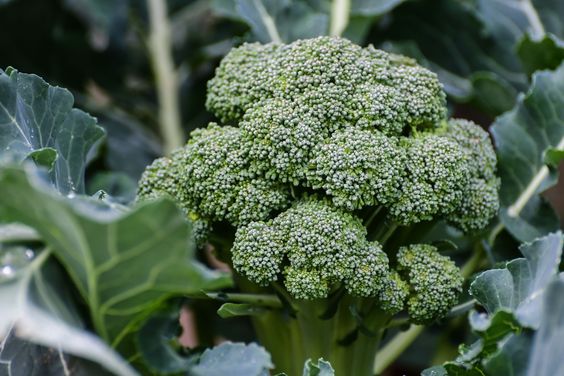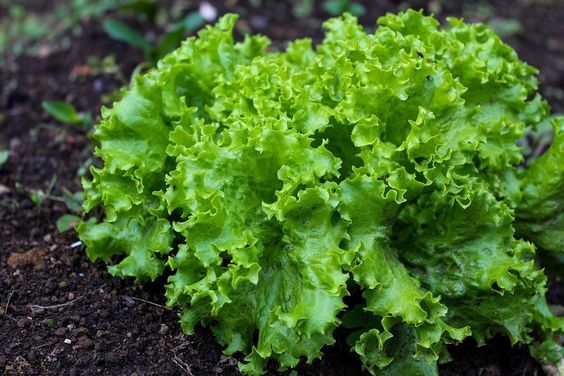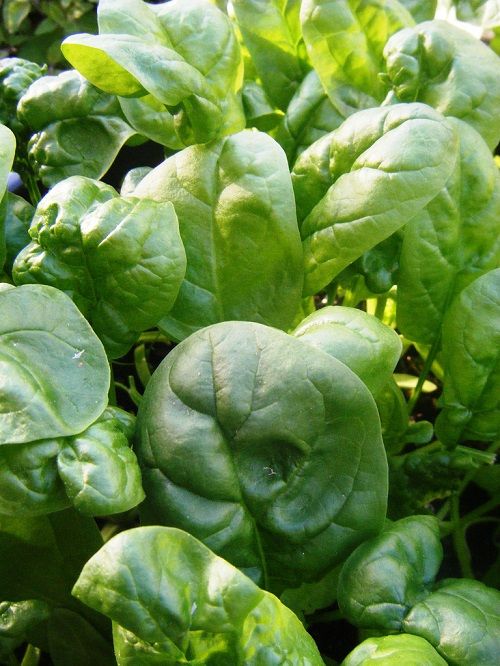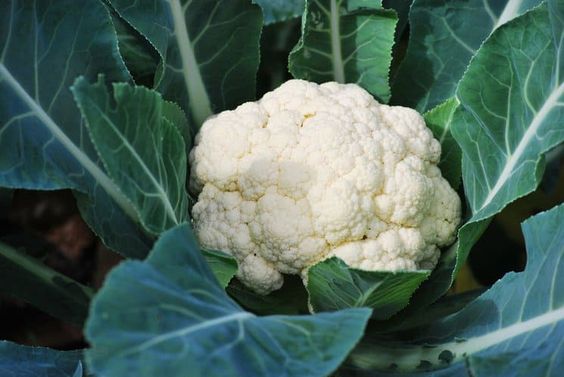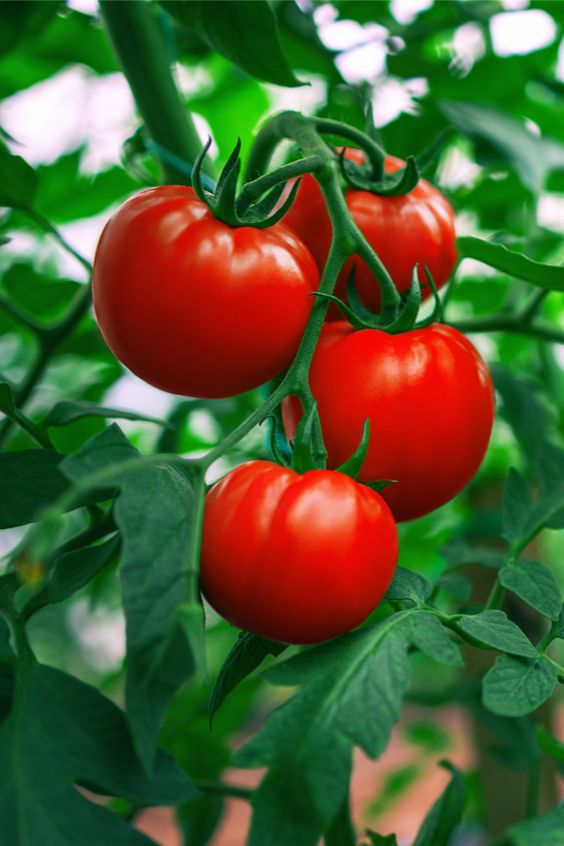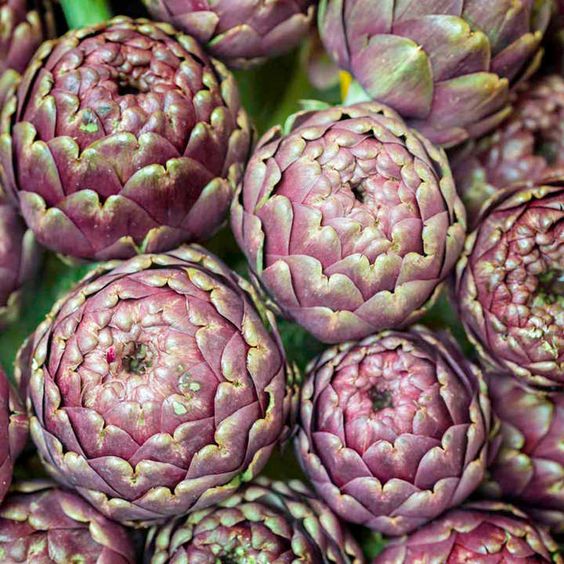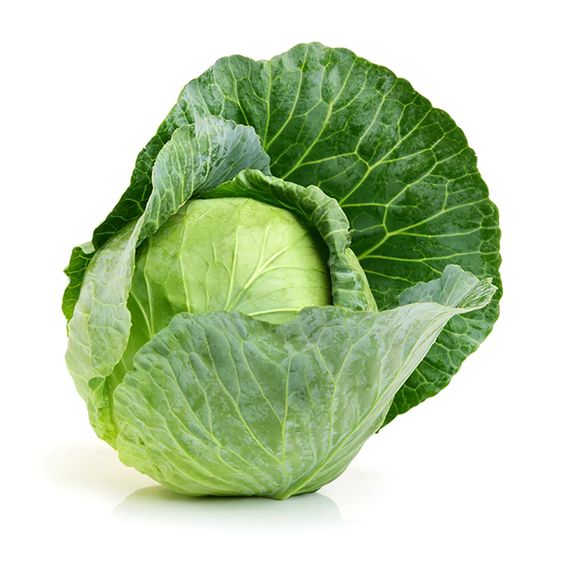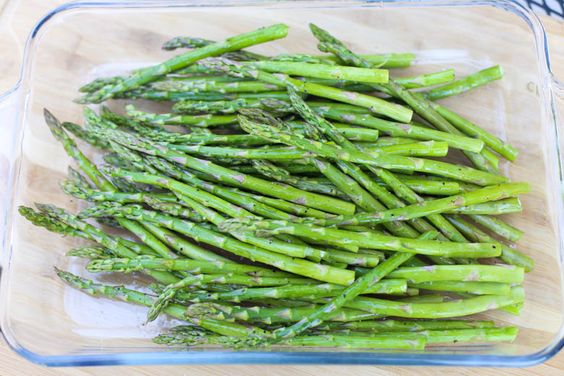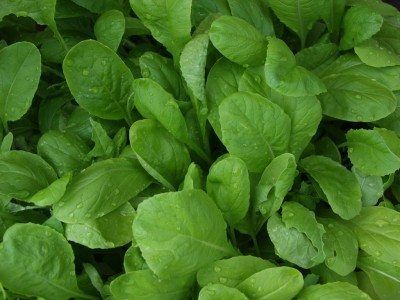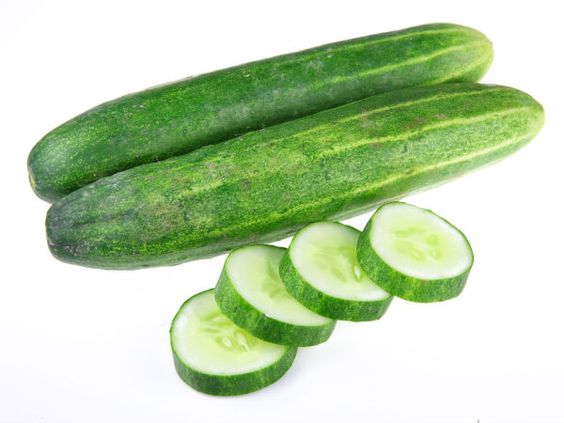olidhealth.com – People with high blood sugar must be selective to choose food with low content of carbohydrates. A bad choice can lead to blood sugar spiked and lead to another disease. The best way to deal with it is to know what kind of food which have the benefit of maintaining or lowering blood sugar levels. One of the foods that contain low sugar is vegetables.
This article shows you the best vegetable to lower or keep your blood sugar level stable. moreover, we have cooking tips for each vegetable to fit your appetite.
Before that, you should know what is the true meaning of high blood sugar.
What is High Blood Sugar?
High blood sugar or we are known as diabetes (hyperglycemia) is a condition that people who have a high concentration of glucose in their bloodstream [1]. It is caused by lacking insulin to convert glucose. The body can’t keep maintaining or losing production of insulin and uncontrollable sugar level enter the blood circulation. Build-up glucose can lead to diabetes complications such as retina disease, kidney disease, and heart-related disease.
There are two types of diabetes that are common in people [2]:
- Type 1 diabetes – This type doesn’t produce insulin in the pancreas and must take insulin injection. First diagnoses in this type occur on young people and take more caution for food with high content of carbohydrates.
- Type 2 diabetes – This type can produce insulin but in a limited amount. Middle-aged and older people with obesity generally have this type of diabetes. However, children and adolescents can also be susceptible to this disease and must be diagnosed first.
There is just a little information about food that can induce insulin production. However, people always be confused to take food which has lowers blood sugar. Food, especially vegetables which have fiber, vitamins, and minerals can maintain blood sugar levels or even reduce diabetes complications.
Antioxidants and other properties in these veggies reduce diabetes complications but not completely lower blood sugar levels. Some studies suggest that hyperglycemia can diabetes can create free radicals from oxidized glucose that can trigger other diseases. Antioxidants are useful for preventing free radicals from damaging cells that can trigger these diseases. Hopefully, the reduced free radicals from glucose oxidation will have an impact on reducing the amount of sugar in the blood.
What Are a Glycemic Index and Its Relation To Blood Sugar Level?
The Glycemic index is rating carbohydrate content in food. People with diabetes avoid consuming high carbohydrate food. Food with a low glycemic index is good for diabetes. The scale of 0 (lowest) to 100 (highest). The list of the glycemic index is like this [3].
- Low glycemic index range from 0 to 55.
- Mid glycemic index range from 56 to 69.
- High glycemic index range from 70 to 100.
Low glycemic food is also related to the high amount of vitamins, minerals, and fiber. Furthermore, food with a high glycemic index must be avoided since it can spike blood sugar levels.
The glycemic index also indicates the absorption rate of carbohydrates to your body. Load carbohydrate in food classified in glycemic load.
- Low Glycemic Load range from 0 to 10
- Mid glycemic load range from 11 to 20
- High glycemic load range from 20 to more
High fiber food is slower to be absorbed than food with low fiber because has a low Glycemic load.
Notably, The number of vegetable glycemic index in this article are not absolute. Just use this number for reminders and manage your carb intake.
Are Processed Food Can Affect The Glycemic Index?
The best way to consume vegetables is to eat them fresh and raw. However, it will be boring if you eat it every day without processing it first.
Fermented fruit or vegetable can also lower glycemic index because they slowly absorb it. however, processing the food can also increase the glycemic index by mashing, grinding, or cooking. It can make food easier to absorb and inflate blood sugar levels [3].
How To Process Vegetables To Make Them More Healthy
How to process this vegetable is an important step to make it more healthy. Mistreating this vegetable will loss of its nutrition. There are cooking techniques that can be used to process vegetables such as:
- Microwave steamed – The best way to retain nutrition because of controllable heat and can be cooked without additional ingredients. However, some vegetable doesn’t cook well with this method.
- Steamed – One of the best cooking techniques to maintain nutrition composition in vegetables since it doesn’t touch water which can wash away the nutrition.
- Sauteed – This method can increase the strong flavor in the dish. Olive oil can be added to increase the absorption of fat-soluble phytonutrients such as phenol and carotenes. Furthermore, olive oil also has antioxidant agents to enrich nutrition in vegetables. Nutrients with fat-soluble properties can be carried and absorbed into the intestine which would go into the bloodstream.
- Boiled – You have to care if you want to use this method. Take a minimal amount of water. vitamin B and C are not stable in heat. the color change in water indicated the nutrient have been separated into the water. If you make a soup, it’s different cases since the stew is not being thrown away. Managing boiling time is also important because overcooking can destroy its nutrient.
- Roasted – Not the best way to cook veggies because of high heat, but it’s an alternate option to make rich flavor without adding seasoning such as salt.
- Fried – The worse choice to processed veggies because can decrease almost essential nutrition.
Advice: Be cautious to use fat excessively in sauteing method. Too much fat can be affected to your cardiovascular system, and increase your bad cholesterol. Choose wisely to add fat to cooking vegetables.
List Glycemic Index in Vegetable
Below is a list of vegetables which has the benefit to maintain or lowering blood sugar level.
| Type of Vegetables | Glycemic Index | Glycemic Load |
| carrot | 16 | 1 |
| broccoli | 7 | 1 |
| lettuce | 15 | 1 |
| spinach | 12 | 1 |
| cauliflower | 15 | 1 |
| tomatoes | 15 | 1 |
| artichoke | 15 | 1 |
| cabbage | 10 | 1 |
| asparagus | 15 | 1 |
| mushroom | 10 | 1 |
| mustard green | 15 | 1 |
| cucumber | 15 | 1 |
note: This data is only an estimate from several sources. The number may change depending on the condition of the vegetables. This data only be used to calculate the amount of carbohydrate intake and cannot be used as a reference for medical purposes.
To detail information, we overview each vegetable with additional cooking tips to retain its nutrient.
Carrots
Carrots are root vegetables that are known to have huge benefits to the eye. However, it also contributed to maintaining blood sugar levels since they are non-starchy veggies. They have a low glycemic index (about 16 or lower) and low glycemic load (about 1 – 2) in raw variants. Studies suggest that raw and processed carrots are safe for people with type 2 diabetes.
Cooking Tips for Processing Carrot
- Boiled – Green leafy vegetables are not good with the boiling technique. It causes loss the nutrient and makes greenish color in water. On the contrary, beta-carotene content in carrots increased if being boiled first.
- Steamed – This cooking method also can increase beta carotene content in carrots.
- Sauteed – If you want another variant of cooking carrot, sauteing can be an option. Practically, this technique can increase glycemic index but it is still manageable
Broccoli
Broccoli is one of the superfoods which has benefits for health, especially in regulating blood sugar. High fiber in these vegetables can be slowing carb absorption. The glycemic index indicates broccoli is just 7 out of 100. it makes broccoli safe to be consumed for people with high blood sugar.
Moreover, broccoli has lutein compounds as antioxidant agents to prevent cell damage caused by free radical scavengers. Other benefits of broccoli are helping to reduce blood pressure, promote bone health, and prevent cancer.
Cooking Tips for Processing Broccoli
- Baked – Baked Broccoli has more benefits to your health because it can keep antioxidant properties.
- Steamed – Best to protect polyphenol, antioxidant agent, and retain glucosinolate in broccoli.
- Griddled – This is one of the cooking techniques to enrich the flavor of broccoli. It can maintain a glycemic index under 55 and is safe to be eaten.
- Sauteed – Sauteing broccoli with other veggies like mushroom and add little olive oil to flavoring. You can add citrus as a finishing touch. Olive oil and citrus can carry nutrition in broccoli and make it easy to be absorbed in your body.
Lettuce
Having a glycemic index of 15 out of 100 makes lettuce one of the low carbs’ vegetables. It is generally safe for people with diabetes. If you have high blood sugar, these veggies could be an alternative dietary dish. Besides that, lettuce has a glycemic load as low as 1 per serving 1 cup. it is good to maintain blood sugar levels.
Moreover, Lettuce is also rich in nutrients such as vitamin C, folate, iron, and fiber. Although these veggies have contributed to controlling blood sugar, They also have the benefits to flush out free radicals and reduce blood pressure.
Cooking Tips for Processing Lettuce
- Stir-fried – Most people consume lettuce in raw or flesh. However, it can be cooked with a stir-frying method. All you can do is cook lettuce with other veggies and add olive oil. after that, stir-frying with low heat to warm it. Well done lettuce has a smoky aroma and is ready to serve.
- Sauteed – Just like stir-frying method, lettuce also can be served as an addition to dishes in sauteing method. Cook it for less time to prevent its nutrients from being damaged.
- Grilled – One of the choices for processed lettuce but we do not recommend it since can increase the glycemic index more than stir-frying method.
Spinach
These green leafy vegetables are commonly in daily diet. Spinach has low calory and low carbs as low as 12 in glycemic index. It is the best vegetable to maintain or lower blood sugar levels. Nutrients in spinach such as zeaxanthin and other carotenoids contribute to preventing diabetes complications. Furthermore, spinach has high minerals such as iron and sodium to prevent anemia and reduce high blood pressure.
Cooking can be the only option to consume this veggie. It causes spinach to have oxalic acid to prevent iron and calcium absorption. Cook with boiling water can reduce oxalate compounds in spinach.
You can choose raw or cooked spinach to match your appetite. However, the cooked one is more favorable to consume this veggie. Spinach has oxalic acid to prevent iron and calcium absorption. Cook with boiling water can reduce oxalate compounds in spinach.
Cooking Tips for Processing Spinach
- Sauteed – Add kale and other vegetables and saute with olive oil which can enrich its benefits. Use low heat to retain the nutrient in spinach. In the finished dish, add lemon juice to the dish. It will help minerals like iron that can be absorbed easily in the body.
- Baked – Spinach can be baked with chicken breast. Studies say that baking spinach can retain antioxidant properties more efficiently than other cooking techniques.
Cauliflower
Cauliflower is a “superfood” that has a ton of benefits for health. As one of the list diabetes diets, The Glycemic index in cauliflower is less than 15. low carbohydrates content in this veggie can maintain blood sugar levels. Furthermore, it has high fiber, vitamins, and minerals such as vitamin C, folate, phosphorus, and potassium. Sulforaphane also presents in cauliflower as an antioxidant that can reduce the risk of diabetic complications.
Cooking Tips for Processing Cauliflower
- Steamed – Steamed cauliflower can be an option to cook it. Moreover, it can be served as a garnish for another dish. Even though can be used like that, avoid steaming cauliflower with microwave since it can reduce its nutrients in some studies.
- Boiled – The simple way to cook cauliflower is boiling. However, this method is not recommended since some studies suggest that boiling cauliflower can lose its nutrient as far as 50%.
- Roasted – Caramelization cauliflower by roasting does not much increase glycemic index. this technique can be an option if you are bored with steaming cauliflower. The nutrient may be decreasing in this way but still safe to be consumed.
Tomatoes
Tomato has a glycemic index as low as 15 indicated have low carb content. These red veggies also have high lycopene compounds to improve your health. However, some studies find that lycopene can not directly reduce blood sugar. Lycopene provides antioxidant properties to prevent the risk of type 2 diabetes complications. Besides lycopene, it also has vitamin C and A as antioxidant agents.
Moreover, tomatoes have chromium which has to contributes to maintaining blood sugar levels. Some studies suggest that chromium can improve insulin sensitivity and lower blood sugar.
Cooking Tips for Processing Tomatoes
- Steamed – According to experts, steaming tomatoes can be the healthiest way since can retain more nutrients.
- Sauteed – Alternative option for cooking tomatoes. Fat-soluble nutrients can be absorbed better if you add olive oil to them.
- Blended – Studies find that blending tomatoes can increase glycemic index up to 42 and glycemic load up to 4. However, it is still manageable as low carb.
- Roasted – Tomatoes can be roasted to concentrate their water content and enrich the flavor. Roasting can increase lycopene more effectively than boiling.
- Boiled – We assumed this method is not good for diabetics. according to the experts that boiling tomatoes can also increase the Glycemic index and Glycemic load up to 47 and 6
Artichoke
This bud-like vegetable has many benefits to your health, especially to maintain blood sugar levels. It has a high fiber and low glycemic index (lower than 15) as well as a low glycemic load (lower than 2). Studies found that polyphenol in artichoke can lower blood sugar levels and prevent diabetes complications.
Artichoke has tons of nutrients such as vitamin C, vitamin K, and folate. Moreover, it also has essential minerals like magnesium, potassium, and iron. The other benefits of artichoke may reduce blood pressure and have antioxidant properties to protect cells from being damaged by free radicals.
Cooking Tips for Processing Artichoke
- Steamed – The healthy way to cook an artichoke is steaming because it can maintain its nutrition.
- Baked – The best way is baking artichoke, why? Baking can preserve antioxidant properties. It is also delicious to bake with eggs, broccoli, or mushroom. Add a little spice and ready to serve
Cabbage
The glycemic index in Cabbage is as low as 10 which indicated having low carbs. It also has fiber to slow the absorption of carbohydrates and improve the digestive system. Moreover, cabbage as it is known has contributed to improving skin health and lowering blood pressure. The red type of cabbage has anthocyanin as antioxidants as well as lutein, beta-carotene, and zeaxanthin which can be used to fight free radicals and protect cells.
Cooking Tips for Processing Cabbage
Mostly, these green veggies serve as raw and fresh. However, it can be cooked such as:
- Sauteed – Adding olive oil and garlic in medium heat will add flavor to the cabbage. It is possible to increase the glycemic index. So, be careful to use these cooking tips.
- Baked – Baking cabbage has more benefits to retain antioxidant properties, according to the expert.
- Grilled – Alternative choice if you are bored with conventional cooking methods. Grilled cabbage is best as an additional side dish with steak and a good choice for diabetic dietary.
Asparagus
This crunchy veggie is one of the best vegetables which can maintain or reduce blood sugar levels since having low carbohydrates. Asparagus is also one of the gluten-free vegetables. Asparagus has vitamin E which can control blood sugar levels. Furthermore, it has high beta-carotene, vitamin C, folate, potassium, and sodium. Some studies suggest that asparagus may have anti-diabetic properties for people with type 2 diabetes. Besides its benefit for diabetes, it also serves as an antioxidant agent, improves the digestion system, and reduces bad cholesterol.
Cooking Tips for Processing Asparagus
- Baked – The best way to cook asparagus is baking. Studies suggest that baked asparagus can minimalize loses of antioxidant properties.
- Stir-fried – Another choice to cook asparagus. Add olive oil with some vegetables and stir-fry with a little seasoning. It’s a good choice for people with diabetes.
- Sauteed – Asparagus sauteed with mushrooms, cabbage, herbs, and butter can be a healthy choice of dishes.
Mushroom
There are many forms of mushrooms you can add to your dietary resource. The benefit of mushrooms has been vast enough in traditional Chinese medicine for maintaining or lowering blood sugar. Mushrooms have a glycemic index score of 10 which is indicated to have low carbohydrates. It also has high nutrients which can help maintain blood pressure, improve cellular metabolism, prevent the risk of heart disease, and serve as an anti-cancer agent. Studies say that polysaccharides in most mushrooms can treat people with diabetes since they can induce insulin production.
Cooking Tips for Processing Mushroom
- Grilled – One of the best methods to cook mushrooms. It can retain the nutrients in mushrooms. Studies suggest that grilling with a stove or microwave can increase antioxidant agents.
- Sauteed – The mushroom can be more luscious if sauteing it with garlic and olive oil. However, it can increase the glycemic index. So, be mindful of this method as cooking mushrooms.
- Fermented – Some variant mushrooms can be fermented to enrich their nutrition. Studies suggest that fermented mushrooms have a lower carb and higher protein than common mushrooms. It may be safe to consume as a diabetes diet since may lower glycemic index.
- Boiled – We do not recommend boiling mushrooms since can decrease polyphenol compounds.
Mustard Green
These veggies which have a spice taste have a glycemic index as low as 15. Mustard green has abundant vitamins such as vitamin K (highest), beta-carotene, vitamin B complex (B6, B2, B1), C. Moreover, it also has minerals including copper, iron, calcium, potassium, and phosphorus.
On the other side, antioxidant properties in mustard green can protect cells to defend again free radicals. Moreover, it may have reduced diabetes complications and improved heart health.
Cooking Tips for Processing Mustard Green
Some studies suggest that cooked mustard green can increase vitamin A, K, and copper but lower vitamin C and E. It is your choice to consume mustard green as raw or cooked. There options for this case such as:
- Sauteed – Most common cook mustard green is sauteing. You can add olive oil and garlic to enrich the flavor.
- Boiled – This can be an option for cooking mustard greens. Its nutrients can be preserved if it is made into soup or sauce because the gravy is also consumed.
- Fermented – In Asia, it is common to ferment mustard green especially in Chinese and Korean cuisine. Studies suggest that fermented food can slow the absorption of carbohydrates.
Cucumber
If you have diabetes, these veggies can help to maintain your blood sugar level. In fact, they have a low glycemic index (15 in 100g) which is safe to consume. It also provides nutrients such as vitamin C, B, K, and potassium. In other words, cucumbers have more benefits than you can think.
Consume in raw and flesh have a low glycemic index than cooking it. You can add to your dish as additional dietary.
Cooking Tips for Processing Cucumber
- Sauteed – Cucumber is usually consumed raw. However, you can saute cucumber and add spinach or kale as a variant healthy diet.
- Roasted – Roasting cucumber until wrinkled appearance and adding garnish can be an option to eat cucumber. It can lower water composition in cucumbers. Although it does increase the glycemic index, it is still tolerable.
- Fermented – Making it as pickles would be contributed to maintaining your blood sugar level.
Tips Preparing Fresh Vegetable
The first thing is to wash it first before cutting it. The nutrient with water-soluble properties in veggies can be lost if you wash them after cutting. Secondly, cut into medium size, not too small except for children. Minimizing cutting in the preparation stage can reduce nutrient loss. Thirdly, don’t peel the veggies. Some of them have more nutrition in their skin than their flesh. Lastly, cook soon after preparing vegetables since nutrients can be destroyed if exposed to light and air.
Note to reader
Glycemic index and glycemic load in this article are just to be a reference for controlling carbohydrate intake. The number is not absolute and can be changed depending on food quality. Do not use the numbers in this article for medical purposes and contact your doctor to ensure validity.
Reference
[1] https://www.ncbi.nlm.nih.gov/books/NBK430900/ – Hyperglycemia introduction
[2] https://www.ncbi.nlm.nih.gov/pmc/articles/PMC4478580/ – Type of diabetes mellitus
[3] https://www.sciencedirect.com/science/article/pii/S0939475315001271 – how to determine GI and application


